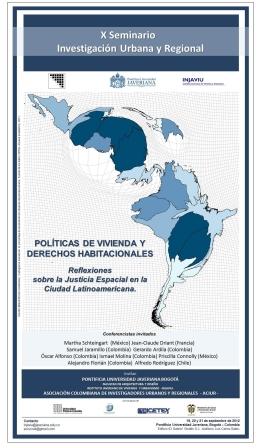Abstract
Este trabajo busca presentar el recorrido gubernamental del proceso de renovación urbana de la ciudad de Bogotá, focalizándome en las diferentes políticas públicas y diagnósticos elaborados por el Estado, que dieron progresivamente una nueva forma a la estructura urbana del centro de la ciudad, cuando se inició en 1998 el proceso de substitución de El Cartucho. A partir de la creación del Parque Tercer Milenio de conformidad con el “Programa de Renovación Urbana para la recuperación del sector comprendido por los barrios San Bernardo y Santa Inés y sus zonas aledañas” algunos indicadores de seguridad fueron mejorados, de modo que el proyecto de renovación urbana continuó, en el año 2007, con la propuesta de creación del complejo hospitalario de Ciudad Salud que aprovechaba los equipamientos urbanos existentes.This journal is registered under a Creative Commons Attribution 4.0 International Public License. Thus, this work may be reproduced, distributed, and publicly shared in digital format, as long as the names of the authors and Pontificia Universidad Javeriana are acknowledged. Others are allowed to quote, adapt, transform, auto-archive, republish, and create based on this material, for any purpose (even commercial ones), provided the authorship is duly acknowledged, a link to the original work is provided, and it is specified if changes have been made. Pontificia Universidad Javeriana does not hold the rights of published works and the authors are solely responsible for the contents of their works; they keep the moral, intellectual, privacy, and publicity rights.
Approving the intervention of the work (review, copy-editing, translation, layout) and the following outreach, are granted through an use license and not through an assignment of rights. This means the journal and Pontificia Universidad Javeriana cannot be held responsible for any ethical malpractice by the authors. As a consequence of the protection granted by the use license, the journal is not required to publish recantations or modify information already published, unless the errata stems from the editorial management process. Publishing contents in this journal does not generate royalties for contributors.


